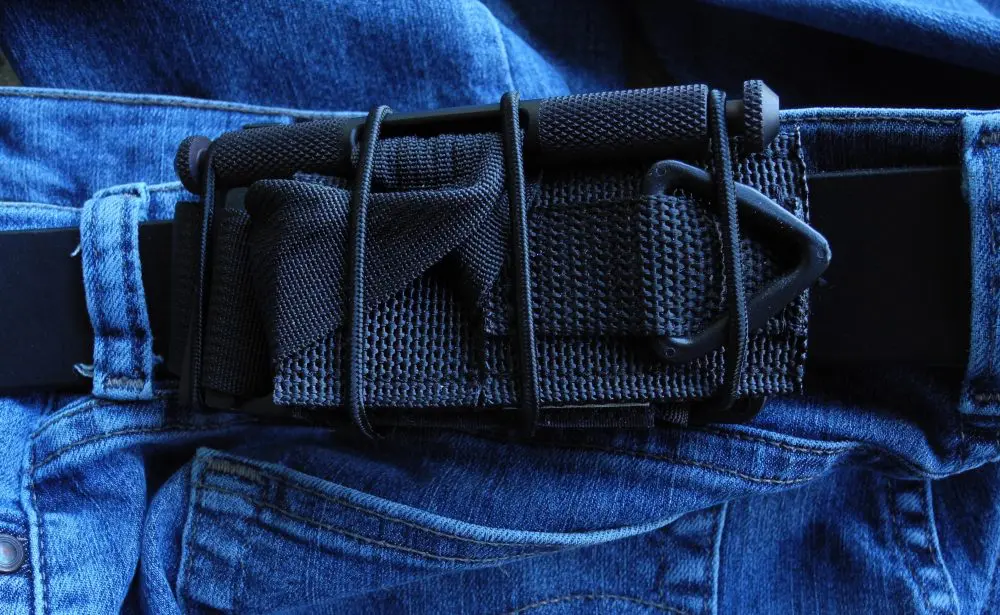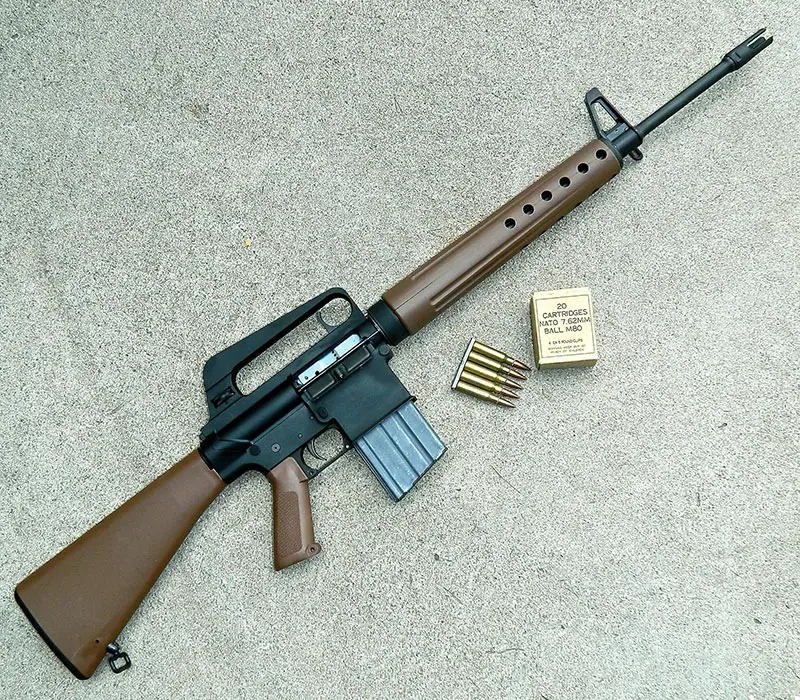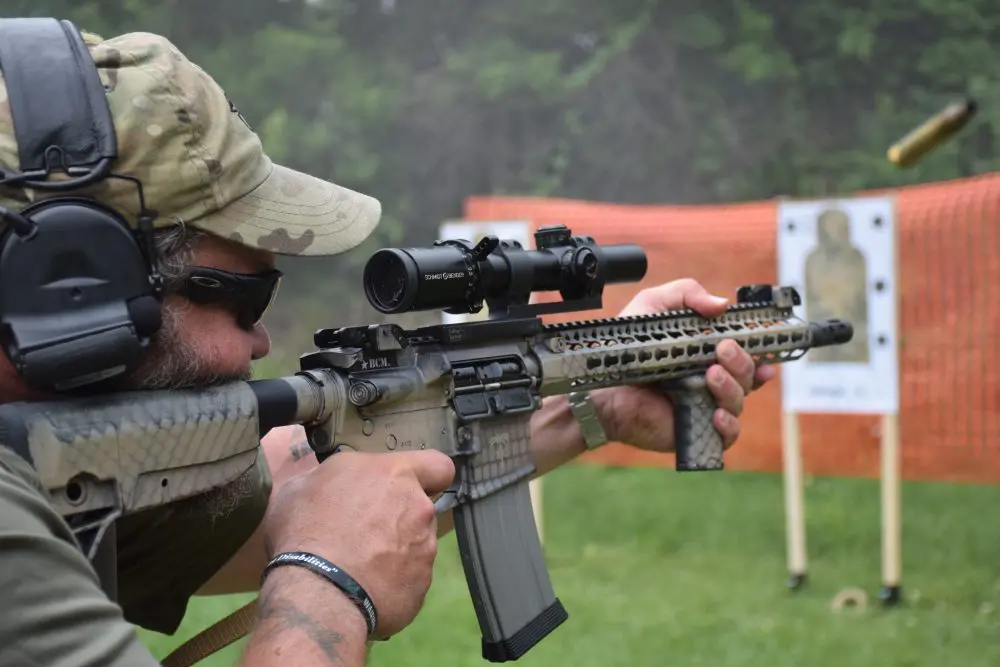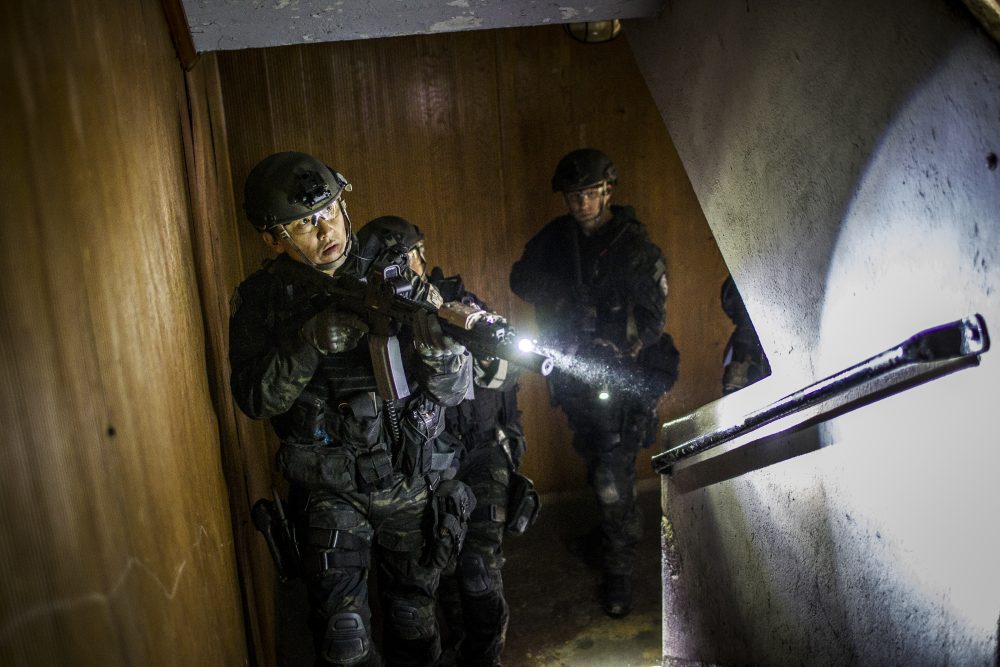
In an active-shooter incident, it will take longer for emergency response personnel to reach victims than it takes one to bleed out. A “blow out” kit (trauma kit) containing at least a tourniquet and hemostatic agent should be part of your everyday carry. Training is also essential.
The Paris attacks in November 2015 provide an extreme example of a general principle of active-shooter attacks—emergency personnel cannot reach shooting victims until the threat has been neutralized. It was over 160 minutes from the time the terrorists fired the first shots in the Bataclan theater until the first responders were able to reach those inside the venue.
Table of Contents
BLOOD LOSS
Acute fluid or blood loss is a life-threatening emergency. It makes the heart unable to pump essential blood to the body and results in multiple organ failure. This hypovolemic shock has four stages, each based on the amount of blood loss. Stage I is under 15% by volume, Stage II between 15 and 30%, Stage III between 30 and 40%, and Stage IV more than 40%.
Based on a U.S. Army Institute of Surgical Research (USAISR) study, stopping blood loss while the patient is in Stage I shock, i.e., keeping the blood volume loss below 15%, keeps the survivability rate high—about 94%. If blood loss continues and the patient goes into Stage II shock or greater, survivability rate goes down to just 14%.
Although many dogmas relating to tourniquet use persist, tourniquets have re-emerged in Tactical Emergency Medical Support (TEMS) as the standard of care in the tactical environment due to their ease of use, rapid application, and stoppage of blood loss.
Instead of viewing use of the tourniquet as a last resort, as has been the case in the past with civilian Emergency Medical Services (EMS) and emergency room physicians, the new Tactical Combat Casualty Care (TCCC) protocol considers the military tourniquet an initial lifesaving intervention to control massive hemorrhage from an extremity.
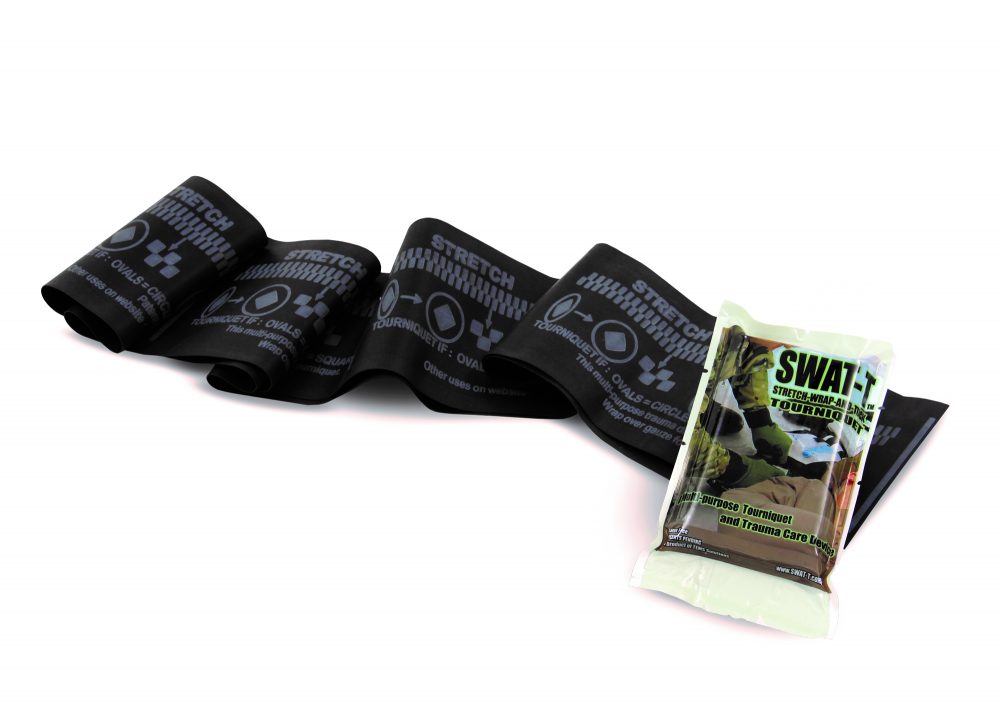
TACTICAL COMBAT CASUALTY CARE
Tactical casualty care for private citizens is an adaptation of TCCC, whose guidelines differ from the Advanced Trauma Life Support (ATLS) guidelines on which civilian trauma care has been based in most countries. In ATLS, injuries are diagnosed and treated in accordance with the ABCDE sequence: Airway, Breathing, Circulation, Disability, Environment and Exposure.
In the TCCC model, injuries are diagnosed and treated in accordance with the MARCH sequence: Massive hemorrhage, Airway, Respiration, Circulation, Head injury/Hypothermia.
TCCC has three goals: 1) treat the casualty, 2) prevent additional casualties, and 3) complete the mission. There are three phases to combat casualty care: 1) Care Under Fire, 2) Tactical Field Care, and 3) Combat Casualty Evacuation Care.
The TCCC Basic Plan for Care Under Fire is: 1) return fire and take cover, 2) direct or expect the wounded to remain engaged as a combatant, 3) direct the wounded to move to cover and apply self-aid, 4) try to keep the wounded from sustaining additional wounds, and 5) airway management should be delayed until the Tactical Field Care phase.
Finally, stop life-threatening external hemorrhage if tactically feasible by directing the wounded to control hemorrhage by self-aid. Use a tourniquet for hemorrhage that is anatomically amenable to tourniquet application, and apply the tourniquet above the wound high on the extremity, over the uniform, and tighten to stop arterial bleeding or until pulse is lost. Move the wounded to cover.
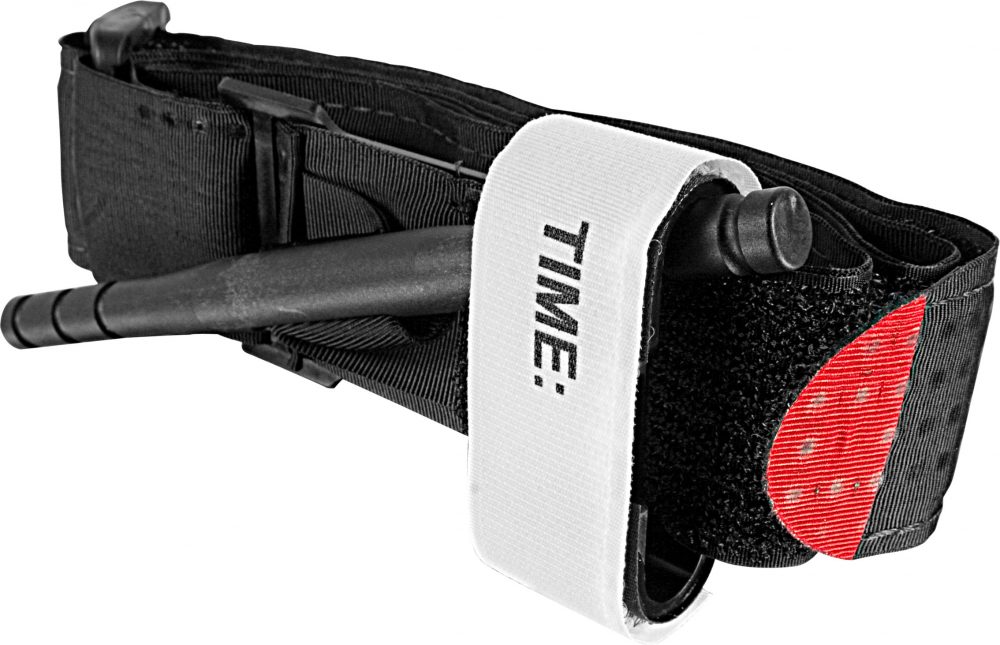
Hemorrhage from extremities is the #1 cause of preventable death on the battlefield. TCCC has guidelines for bleeding. These are: Assess for unrecognized hemorrhage and control all sources of bleeding. If not already done, use a Committee on TCCC (CoTCCC)-recommended tourniquet to control life-threatening external hemorrhage that is anatomically amenable to tourniquet application or for any traumatic amputation.
When time and the tactical situation permit, a pulse check should be conducted. If a pulse is still present, consider additional tightening of the tourniquet or the use of a second tourniquet, side-by-side and proximal to the first, to eliminate the pulse. Expose and clearly mark with an indelible marker all tourniquet sites with the time of tourniquet application.
RECOMMENDED TOURNIQUETS
The Composite Resources Combat Application Tourniquet® (C-A-T) and Tactical Medical Solutions SOF Tactical Tourniquet® (SOF-TT) are the only two tactical tourniquets CoTCCC recommends, based on a 2004 study of nine battlefield tourniquets conducted by the USAISR. Seven of these were commercially available and two were prototype systems.
Three tourniquets were identified as 100% effective in stopping arterial blood flow: the C-A-T, SOF-TT, and Emergency and Military Tourniquet (EMT).
The EMT is an inflatable pneumatic device best suited for aid stations and hospitals. The C-A-T and SOF-TT are both lightweight and inexpensive windlass-type devices. Due to its lighter weight and being slightly easier to use, the C-A-T was selected as the primary tourniquet, followed by the SOF-TT.
All the tourniquets have undergone improvements since the study, and new tourniquets have also hit the market that have proven very effective.
The C-A-T has had a number of recent enhancements. Its strap now features a red elliptical tip to aid users in threading it. It has a polymer windlass and reinforced windlass clip that is secured with Velcro®. The windlass rod is twice as strong. The windlass clip has a highly visible security tab and includes a writable area to record time of application. North American Rescue is the sole distributor for the C-A-T in the United States.
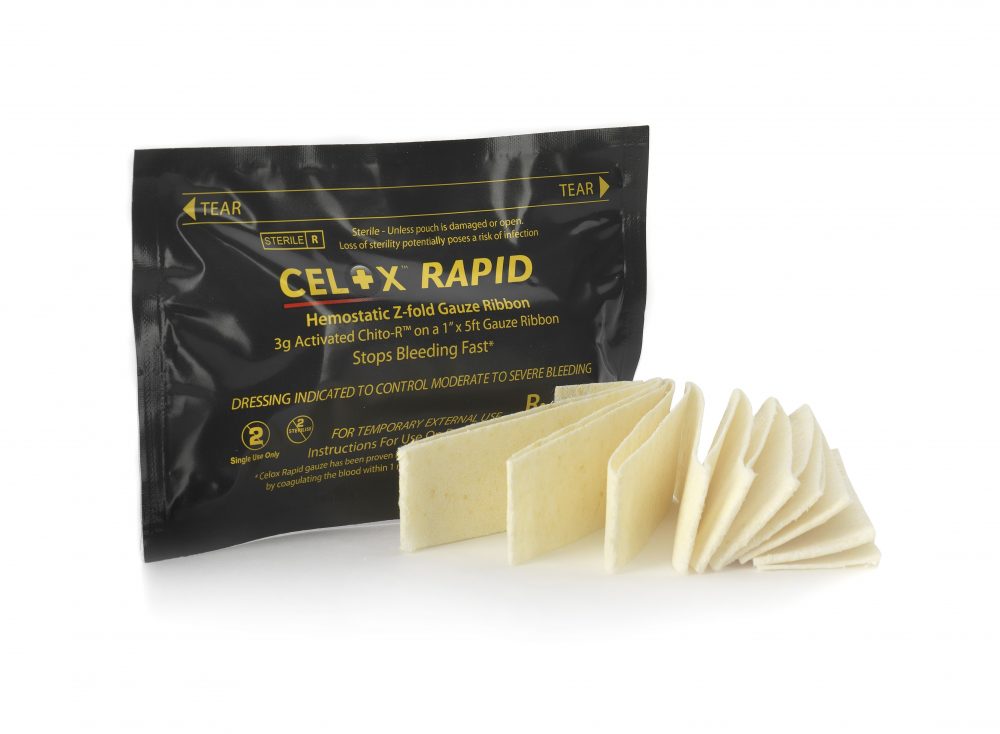
Tactical Medical Solutions has come out with a new version of its SOF-TT: the SOF Tactical Tourniquet Wide (SOF-TT-W), the result of a two-year study that compiled end-user research and laboratory studies to develop a more effective tourniquet for all environments. TMS was able to reduce the weight of the tourniquet by 25% while enhancing performance. It’s now stronger, faster and easier to apply. The SOF-TT-W features a snap-lock buckle for rapid, easy application and a wider 1.5-inch strap for additional arterial compression. Aluminum alloy components are utilized in all areas of critical function.
Another new tourniquet that is gaining considerable interest in the tactical community is TEMS Solutions unique SWAT-Tourniquet™. Of stretch-retention design, the SWAT-T (Stretch, Wrap and Tuck) is exceptionally versatile. It may be employed as a tactical tourniquet, pressure dressing, and elastic bandage. It can also be used as an expedient sling.
In testing conducted by trauma surgeon Sydney Vail, MD, the SWAT-T has proven 100% effective in stopping arterial blood flow. The SWAT-T is lightweight, easy to apply, and reusable. It has been applied 5,000 times, used in the sub-zero temps of Antarctica, and boiled in water with no strength degradation.
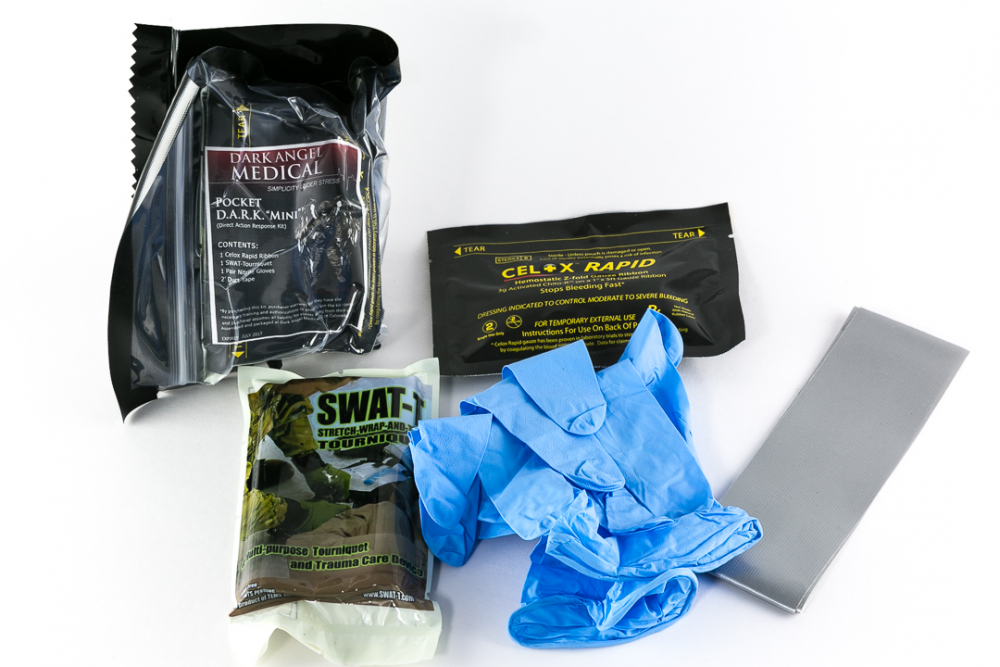
HEMOSTATIC AGENTS
The use of a tourniquet as one of the first responses to stop significant blood loss is gaining widespread approval. But not all wounds lend themselves to tourniquet use. For bleeding that can be stopped or slowed only by compression, or with a tourniquet removal due to an evacuation time longer than two hours, a hemostatic (clotting) agent should be used.
TCCC guidelines specify the application of a clotting agent in conjunction with the application of at least three minutes of direct pressure.
Hemostatic agents (compounds that promote clotting) have become increasingly popular in TEMS. They are designed to stop or slow bleeding more quickly than traditional direct pressure. This does not mean they are without controversy. While the general consensus is that these agents are a valuable addition to the effort to stop blood loss, some see less value in their use.
The overall answer may be that, when it comes to these products, they must be thought of as an addition to the means to the end. No hemostatic agent alone can stop significant bleeding. All must be coupled with direct pressure and the principles of blood pressure, blood flow, and blood clotting.
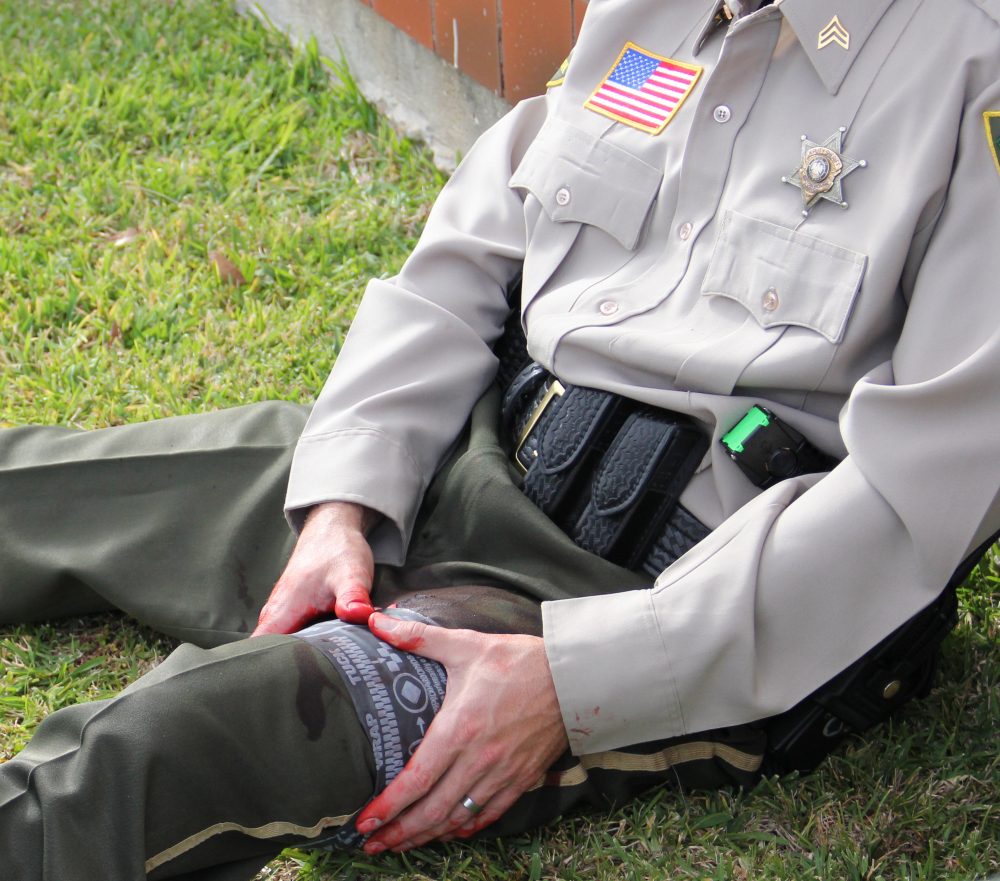
When applied in conjunction with pressure, the product can accelerate clotting and slow or stop bleeding. Such agents work very well as the material used to pack deep wounds. When combined with surface pressure or a compression bandage, the results are almost always favorable.
Controlling blood loss can be a major problem for some individuals, particularly those who take blood thinners and those who suffer from inherited or acquired bleeding or clotting disorders. The blood in these individuals does not clot quickly. Even the smallest cut can be a real problem. Again, hemostatic agents may be a valuable addition to controlling bleeding in these patients.
In addition to a tourniquet, hemostatic agents are wise companions in your blow-out kit. Three hemostatic agents have been approved by the CoTCCC: Z-Medica QuikClot® Combat Gauze®, MedTrade Products Celox® Gauze, and HemCon Medical Technologies ChitoGauze®. All have undergone extensive testing and are battlefield proven.
Unlike previous generations of QuikClot products, the kaolin-based 3rd Generation QuikClot doesn’t release heat. The chemical reaction associated with the zeolite-based 1st and 2nd Generation QuikClot had potential burn effects, which led to the development of the “cooler” kaolin-based QuikClot.
Celox and ChitoGauze contain chitosan, a natural polymer that is extracted from the shells of crustaceans and highly purified. The chitosan binds red blood cells and platelets on the dressing’s surface, providing localized clotting independent of the normal clotting process.
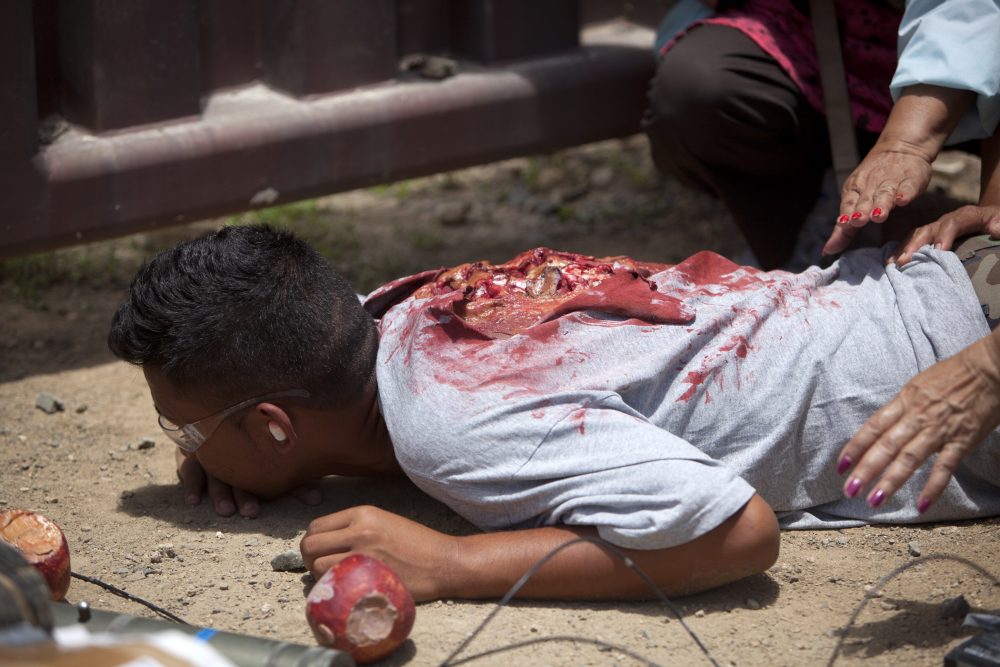
POCKET TRAUMA KIT
Dark Angel Medical makes an excellent and reasonably priced pocket-sized trauma kit. The Pocket D.A.R.K. Mini comes in a three-mil thick vacuum-sealed bag and includes a SWAT-T, Celox Rapid Ribbon with Chito-R, one pair of nitrile gloves, and two-foot length of duct tape.
The duct tape has multiple uses and can be deployed with the vacuum bag to make an expedient occlusive dressing for treating open chest wounds (aka sucking chest wounds), which can lead to tension pneumothorax, the second leading cause of preventable death on the battlefield. The bag has quick-rip perforations and a zip-style closure should the bag need to be resealed.
The Pocket D.A.R.K. Mini measures 4×2.5×1 inches and weighs only 4.9 ounces. A nylon pouch for the Mini is available as an option. Price is $39.95 (plus $10 for optional pouch).
Dark Angel Medical offers a full range of trauma kits as well as training. Their two-day Direct Action Response Training™ (D.A.R.T.) has no prerequisites and is accredited by CECBEMS for 16 continuing education hours for basic and advanced EMTs/paramedics.
OTHER ESSENTIALS
I recommend carrying several tourniquets in addition to a trauma kit. I like the C-A-T for this purpose, since it is the tourniquet that first responders and others are likely to have trained with.
Both a primary and backup flashlight are also essential for everyday carry (EDC). You won’t go wrong with any of the flashlight makers advertising in S.W.A.T., such as Elzetta or SureFire.
SOURCES
CELOX BLOOD CLOTTING PRODUCTS
(866) 9CELOX [(866) 992-3569]
www.celoxonline.com
DARK ANGEL MEDICAL, LLC
(720) 836-7150
www.darkangelmedical.com
ELZETTA DESIGN, LLC
(859) 707-7471
www.elzetta.com
HEMCON MEDICAL TECHNOLOGIES, INC.
(877) 247-0196
www.hemcon.com
NORTH AMERICAN RESCUE, LLC
(888) 689-6277
www.narescue.com
SUREFIRE, LLC
(800) 828-8809
www.surefire.com
TACTICAL MEDICAL SOLUTIONS
(888) 822-6331
www.tacmedsolutions.com
TEMS SOLUTIONS
(877) 931-6862
www.swattourniquet.com
THYRM, LLC
www.thyrm.com
Z-MEDICA
(877) 750-0504
www.quickclot.com


